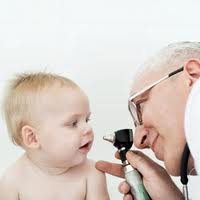Diaper rash is typically appears on babies and teenagers skin under 2 years old. It is a common form of inflammation of the skin that appears bumpy around the area of baby’s diaper. Every baby will get a diaper rash during first 3 years of life. The majority babies between 9 to 12 months old get this. This can also be seen to adults who are unrestrained or paralyzed.
As a mother, dealing with diaper rash is already a part and parcel of childcare. These rashes don’t mark you as a negligent parent since you will definitely experience this for the first year or so of your child’s life.
Diaper rash can be minor or extensive. Rare prickly red spots in a small portion can be seen when it’s mild rashes. For extensive rashes, delicate red bumps that scatter to the abdomen and thighs. The child’s skin may be also puffy and warm when you touch it.

Symptoms of diaper rash
Diaper rash can be easily identified. Underneath of the diaper area, you can see the rash. The skin is irritated and reddish. It may appear to the baby’s genital area or only on a certain place. It may also be seen around the baby’s mouth.
Since the baby can’t tell you how they feel with these rashes, they may express their discomfort through crying because of irritation.
How to prevent diaper rash?
Proper care of the skin is the most preventive way for rashes to appear. Here are some tips to decrease or shorten the period of time of diaper rash:
- Change diapers more often than normal.
- Skin should be washed with mild soap and water.
- Avoid rough scrubbing that may irritate more the skin rash.
- When putting diapers, be sure that it’s not too tight and not too loose, to allow the circulation of the air.
- Breastfeed your child as long as you can. Breastfeeding increases your child’s resistance to infections
Medical Treatment
- If the child appears to have a candidal infection, antifungal creams and medicines are usually recommended by doctors.
- If the child has impetigo or bacterial infection, prescribed antibiotics may be use.
- Your doctor can give you suggestion on a short way of gentle topical steroid or ointment if the rash does not seem to be a fungal contamination.
